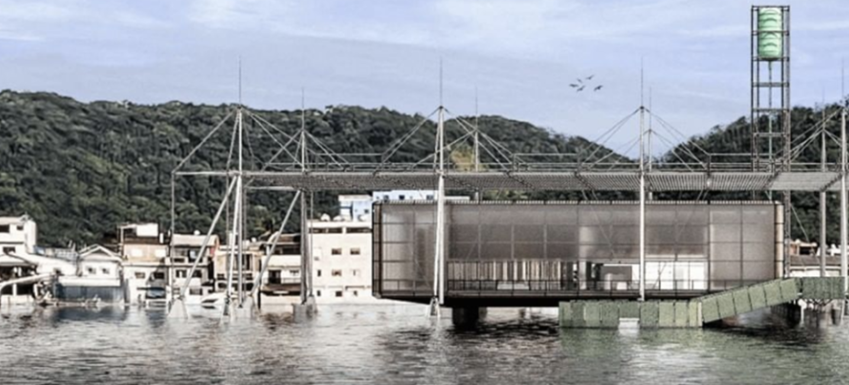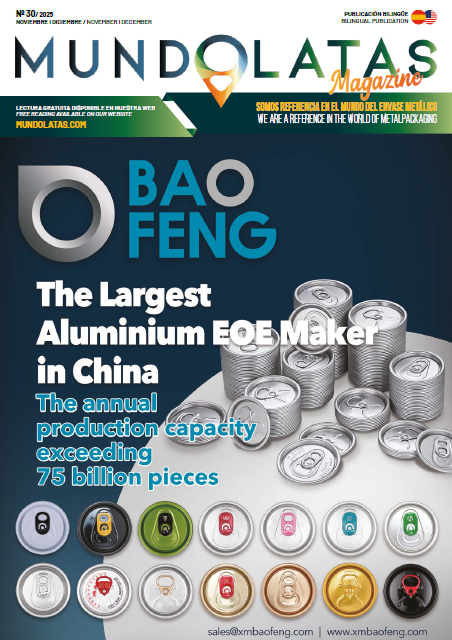The Latin American Steel Association (Alacero), a non-profit organization that brings together the steel value chain in Latin America, has just organized the 14th Alacero Steel Design Competition for Architecture Students 2021, which this year was held virtually. On this occasion it awarded projects by architecture students from universities in different Latin American countries. The works stood out for addressing the potential of sustainable cities, a theme aligned with the UN’s 2030 Agenda. In total, 1,259 students participated in this competition through 383 teams from 120 different universities.
First prize went to students Marcelo Ribas Marçal and Rafael do Nascimento Cirino from Universidade Presbiteriana Mackenzie, São Paulo, Brazil. The Estação Uçaúna building project brings an innovative proposal that also functions as a new cultural and nautical facility, including spaces for exhibitions aimed at the public and having new berths that receive boats coming from the end of the beach The project contributes to the national and international scientific scene, creating professional and academic opportunities.
“The award itself brought us a lot of joy and pride. Somehow we were able to contribute positively to new ideas and possibilities for the future. But regardless of the award, all the experiences and results accumulated during the development of the proposal are extremely valuable and will be treasured”, says Marçal. The students won, in addition to the diploma of recognition, a prize of US$6,000.
The second prize went to students Andrés Ludueña, Octavio Lopez and Francisco Javier Martinez Wuilleumier from the National University of Córdoba, Argentina, who received US$3,000 and a diploma of recognition. The project was based on rethinking spaces and how to use them, it led us to fragment a program, dispensing with typological and compositional elements in search of greater efficiency and viability.
The program was systematized in the heart of Alberdi neighborhood, in a series of seven lots along the four blocks that make up the Pasaje de Aguaducho; a space of great significance for the neighborhood and the city, due to the multicultural nature of its inhabitants, the presence of large industrial infrastructure, the strong imprint of social movements, and for being the site of two historical events such as the “University Reform of ’18” and the “Cordobazo”. The interventions, located in vacant lots and abandoned old houses, both products of real estate speculation, present a program concatenated by the same urban corridor.
The third prize went to Julissa Campos Ayala, Valeria Días Huenupe and Javiera Cid Cabezas of the Universidad de Santiago de Chile (USACH), in Chile. Located in the commune of Lo Prado, Metropolitan Region, the main objective of the Integral Playful Block is to activate the deteriorated public space in social condominiums, promoting health in three main dimensions: physical, mental and social wellbeing, in order to improve the quality of life of the residents, encouraging integral wellbeing in the community. The students received a prize of US$1,000.
The projects were evaluated by architects Sebastián Colle (Argentina), Silvia Scalzo (Brazil), Álvaro Donoso (Chile), Felipe Vejarano (Colombia), Luis Enrique López Cardiel (Mexico) and Juan Mubarak (Dominican Republic).
The objective of the competition is to promote the knowledge of steel as a component of construction systems, demonstrate the material’s potential for different applications and encourage future architects to relate to steel in order to use it as a constructive element.
Starting next year, the Alacero competition will be called #desafioAlacero, to represent the goals of stimulating creative ideas in students and making ideas and designs limiting even the properties of steel. The goal is to make it more dynamic, more attractive, modern and reach more students in a constantly evolving world.











